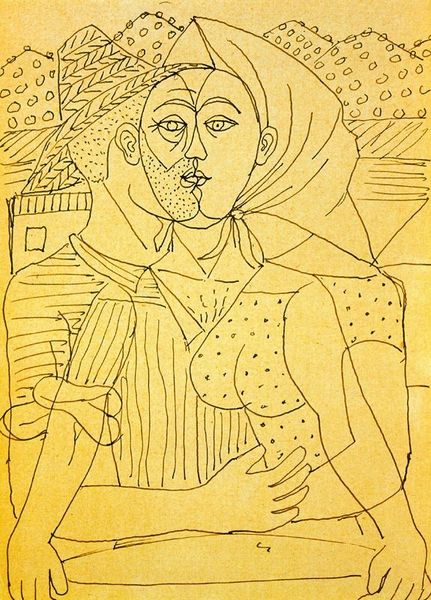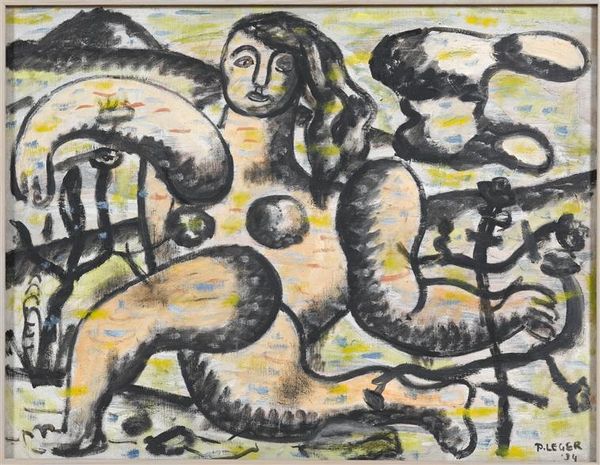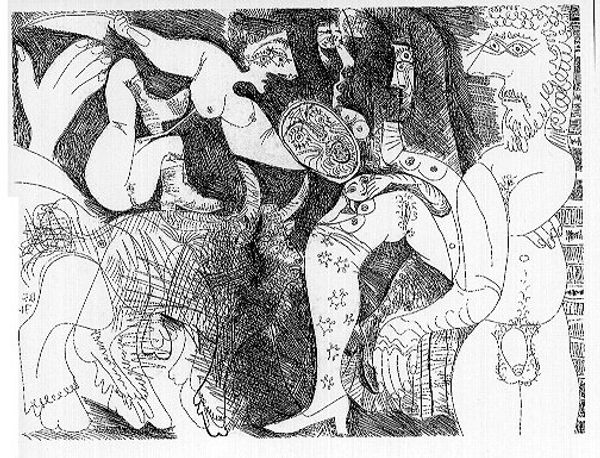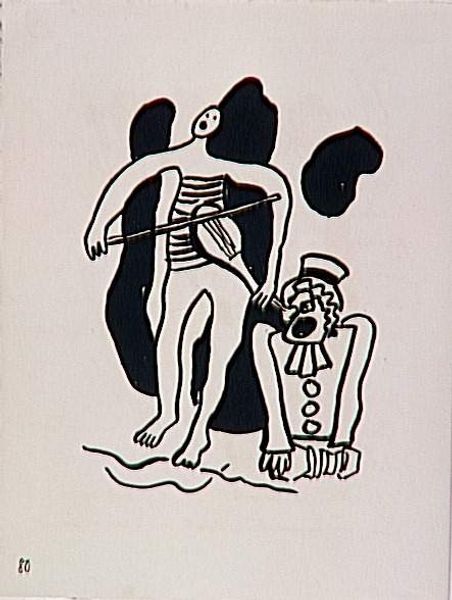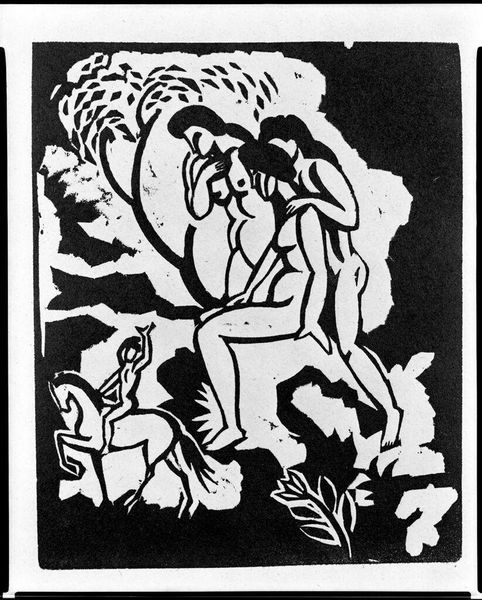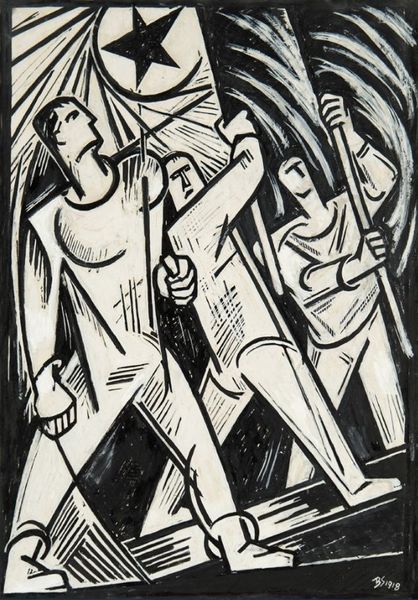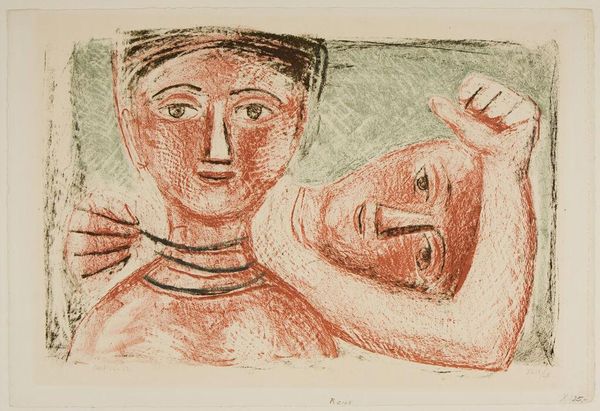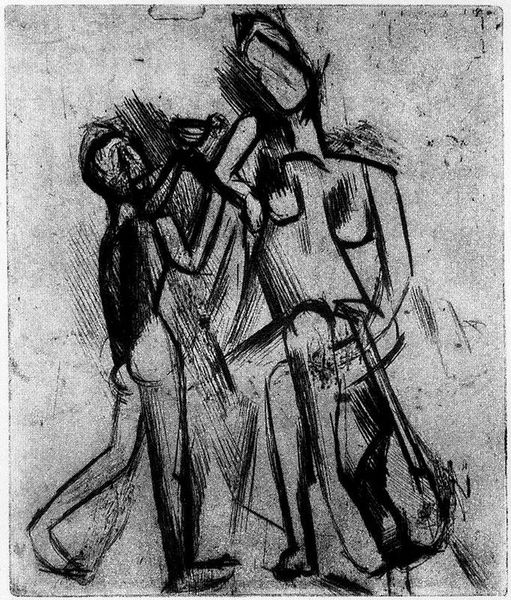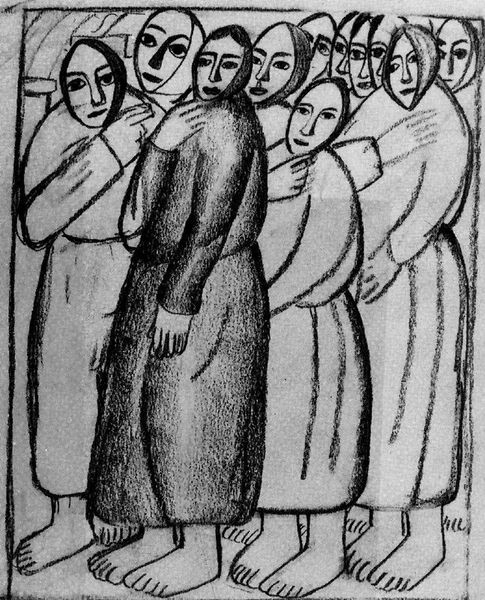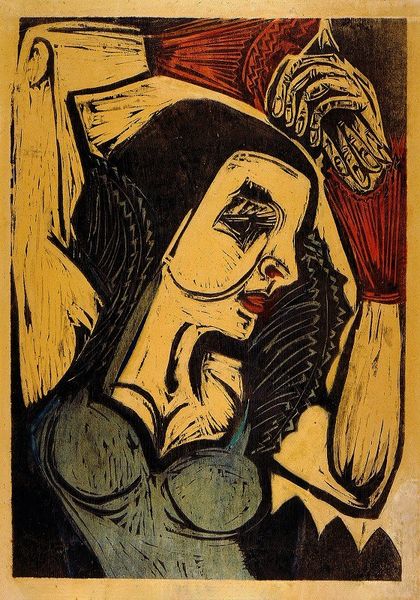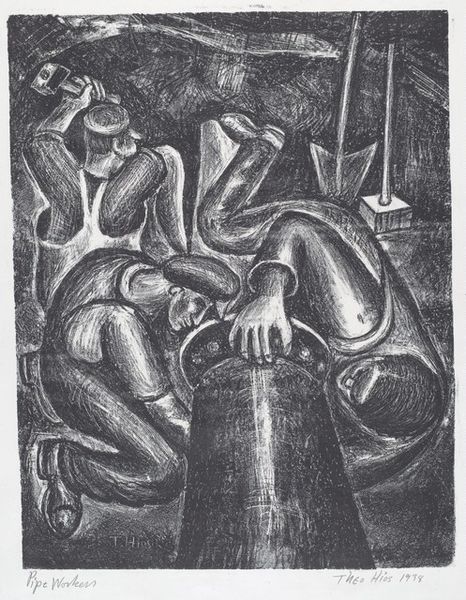
painting
#
portrait
#
cubism
#
painting
#
figuration
#
geometric
#
modernism
Dimensions: 19.5 x 15.8 cm
Copyright: Fernand Leger,Fair Use
Editor: We are looking at Fernand Léger's "Birthday, two women," a painting from 1950. It’s an oil on canvas, depicting two figures in what appears to be a celebratory pose, but the bold outlines and limited color palette create a striking visual impact. What stands out to you in its composition and the use of form? Curator: Indeed, the immediate impact stems from Léger’s calculated simplification. Consider the geometric treatment of the figures. Observe the reduction of forms to their most essential contours: cylindrical shapes dominating the figures, sharply contrasting with the organic forms of the bouquet and foliage. The deliberate placement of black lines against the neutral gray background defines shape while flattening space. What inferences can we draw from these contrasts? Editor: The flat, almost cartoonish figures contrast sharply with the more detailed rendering of the vase and plant. Perhaps this contrast serves to elevate the object over the figures, making the still-life element the painting's true subject? Curator: A keen observation. Léger, deeply influenced by machine aesthetics and technology, champions the objectivity of the object. Note the meticulous detail applied to the bouquet compared to the broad, generalized strokes depicting human features. The painting subtly dismantles traditional hierarchies between figure and ground, instead embracing a compositional strategy that prioritizes balance among these geometric shapes and outlines. Is the image inviting you to reflect on the interplay between form and function in the composition? Editor: So it's not so much about celebrating people as celebrating the aesthetics of form itself. That shifts my understanding quite a bit. Curator: Precisely. Through the emphasis on formal structure over representational accuracy, the image invites reflection on the power of abstraction and the formal relationships within the picture plane. The painting becomes less a representation of an event, and more of a formal statement. Editor: Thank you, seeing it as a study of form rather than just a representation opens a whole new avenue for understanding the image. Curator: Avenues created by Léger’s formal vocabulary: line, shape, and contrast, leading to an intricate visual construction.
Comments
No comments
Be the first to comment and join the conversation on the ultimate creative platform.
